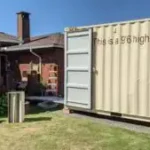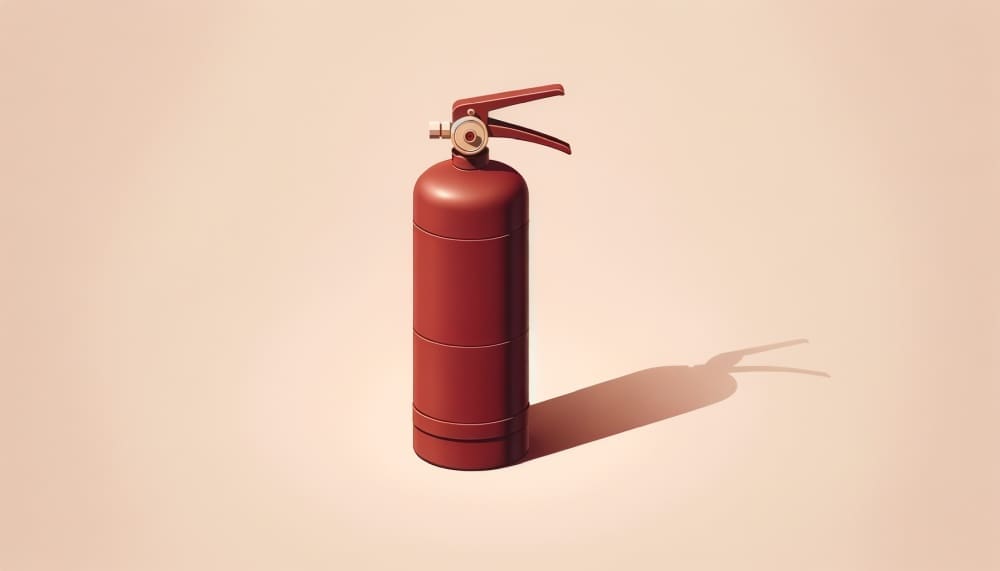Estimated reading time: 4 minutes
Skip Ahead
Summary
As a homeowner, business owner, or employee, you play a crucial role in fire safety. Fire extinguishers are a key part of any fire safety plan, and your knowledge and maintenance of them can be the difference between a minor incident and a major disaster.
Do you realize that not knowing how to use a fire extinguisher or neglecting maintenance could lead to dire consequences? In this article, we’ll guide you through the correct usage of fire extinguishers, ensuring you are well-prepared for any fire emergency.
In this article, we’ll guide you through the correct usage of fire extinguishers. We’ll cover everything from the types of fire extinguishers to the PASS technique for using them.
We’ll also delve into the importance of regular checks and inspections. By the end, you’ll be well-equipped to handle a fire extinguisher confidently and safely.
Understanding Fire Extinguisher Types and Uses
Fire extinguishers are not one-size-fits-all. Different types are designed to combat different classes of fires.
These classes include A, B, C, D, and K. Each class corresponds to a specific type of fire, such as wood, flammable liquids, electrical fires, etc.
Here’s a quick rundown:
- Class A: Ordinary combustibles like wood and paper
- Class B: Flammable liquids and gases
- Class C: Electrical fires
- Class D: Flammable metals
- Class K: Cooking oils and fats
by Wren Meinberg (https://unsplash.com/@wrenmeinberg)
The PASS Technique: A Step-by-Step Guide
Using a fire extinguisher correctly is crucial, but it’s not as complicated as it may seem. The PASS technique is a simple, easy-to-remember method that will make you feel at ease and capable in an emergency.
This acronym stands for Pull, Aim, Squeeze, and Sweep. It’s a step-by-step guide to using most fire extinguishers.
Pull the Pin
The first step is to pull the pin. This breaks the tamper seal and allows you to discharge the extinguisher.
Aim Low at the Base of the Fire
Next, aim low. Point the extinguisher nozzle or hose at the base of the fire, not the flames.
Squeeze the Handle
Then, squeeze the handle. This releases the extinguishing agent.
Sweep Side to Side
Finally, sweep from side to side. Continue this motion until the fire is out. If it reignites, repeat the process.
Regular Checks and Inspections
Fire extinguishers require your regular attention. By conducting checks and inspections, you are proactively ensuring they are always ready to use in an emergency.
Visual inspections should be done monthly. Look for signs of damage or tampering.
Professional inspections should be done annually. These are more thorough and can identify internal issues.
Visual Inspections: How Often Should Fire Extinguishers Be Checked
Visual inspections should be done monthly. Check for signs of damage, such as dents or rust.
Also, ensure the pressure gauge is in the green zone. This indicates the extinguisher is properly charged.
Professional Inspections: How Often Should Fire Extinguishers Be Inspected
Professional inspections should be done annually. These inspections are more detailed.
A certified professional will check the internal parts, replace the tamper seal, and update the inspection tag.
When to Replace or Recharge Your Fire Extinguisher
Fire extinguishers don’t last forever. They need to be replaced or recharged at certain times.
If the pressure gauge is not in the green zone, it’s time for a recharge. This ensures the extinguisher will work when needed.
Extinguishers also need replacement after 12 years. Even if unused, their effectiveness can decrease over time.
Conclusion: Fire Extinguisher Safety and Maintenance
Proper use and maintenance of fire extinguishers are crucial. They can save lives and property in emergencies.
Remember, regular checks and professional inspections ensure their effectiveness. Stay safe!
FAQ: Proper Use of Fire Extinguishers
What are the different types of fire extinguishers?
- Class A: For ordinary combustibles like wood and paper.
- Class B: For flammable liquids and gases.
- Class C: For electrical fires.
- Class D: For flammable metals.
- Class K: For cooking oils and fats.
What is the PASS technique?
The PASS technique is a simple, easy-to-remember method for using fire extinguishers:
- Pull: Pull the pin to break the tamper seal.
- Aim: Aim low at the base of the fire.
- Squeeze: Squeeze the handle to release the extinguishing agent.
- Sweep: Sweep from side to side until the fire is out.
How often should I perform visual inspections of my fire extinguisher?
Visual inspections should be done monthly. Look for signs of damage, like dents or rust, and ensure the pressure gauge is in the green zone.
How often should I have my fire extinguisher professionally inspected?
Professional inspections should be done annually. A certified professional will check the internal parts, replace the tamper seal, and update the inspection tag.
When should I replace or recharge my fire extinguisher?
- Recharge: If the pressure gauge is not in the green zone.
- Replace: After 12 years, even if unused, to ensure effectiveness.
Why is fire extinguisher maintenance important?
Proper use and maintenance of fire extinguishers can save lives and property during emergencies. Regular checks and professional inspections ensure they are always ready to use.




